
James Addison Baker III is an American attorney, diplomat and statesman. A member of the Republican Party, he served as the 10th White House Chief of Staff and 67th United States Secretary of the Treasury under President Ronald Reagan and the 61st U.S. Secretary of State before returning as the 16th White House Chief of Staff under President George H. W. Bush.

James Scott Brady was an American public official who served as assistant to the U.S. president and the 17th White House Press Secretary, serving under President Ronald Reagan. In 1981, John Hinckley Jr. shot and wounded Brady during Hinckley’s attempted assassination of Ronald Reagan, which occurred two months and ten days after Reagan's inauguration.
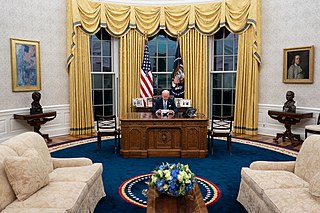
The Oval Office is the formal working space of the president of the United States. Part of the Executive Office of the President of the United States, it is in the West Wing of the White House, in Washington, D.C.

The White House press secretary is a senior White House official whose primary responsibility is to act as spokesperson for the executive branch of the United States federal government, especially with regard to the president, senior aides and executives, as well as government policies.
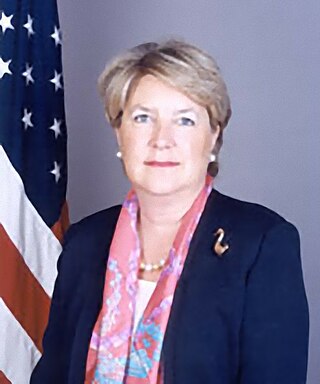
Margaret DeBardeleben Tutwiler is an American politician who has served multiple different positions within the United States Department of State.
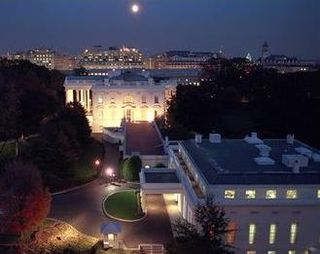
The West Wing of the White House houses the offices of the president of the United States. The West Wing contains the Oval Office, the Cabinet Room, the Situation Room, and the Roosevelt Room.

The Situation Room is an intelligence management center on the ground floor of the West Wing of the White House. While the name suggests it is a single room, it is in fact a 5,000 square feet (460 m2) operations center attached to three secure conference rooms. It is run by about 130 National Security Council staff for the use of the President of the United States and his advisors to monitor and deal with crises at home and abroad and to conduct secure communications with outside persons. The Situation Room has secure, advanced communications equipment for the president to maintain command and control of U.S. forces around the world.

Max Marlin Fitzwater is an American writer-journalist who served as White House Press Secretary for six years under U.S. Presidents Ronald Reagan and George H. W. Bush, making him one of the longest-serving press secretaries in history. He is the only U.S. Press Secretary to be appointed by two different U.S. Presidents.

Larry Melvin Speakes was an American journalist and spokesperson who acted as White House Press Secretary under President Ronald Reagan from 1981 to 1987. He assumed the role after Press Secretary James Brady was shot on March 30, 1981.

On March 30, 1981, President of the United States Ronald Reagan was shot and wounded by John Hinckley Jr. in Washington, D.C., as he was returning to his limousine after a speaking engagement at the Washington Hilton. Hinckley believed the attack would impress actress Jodie Foster, with whom he had developed an erotomanic obsession.
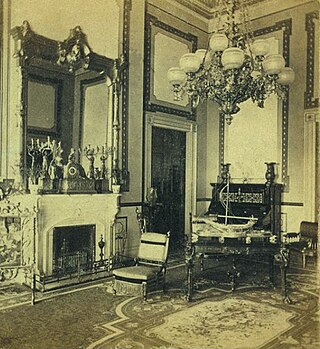
The Red Room is one of three state parlors on the State Floor in the White House, the Washington D.C. home of the president of the United States. The room has served as a parlor and music room, and recent presidents have held small dinner parties in it. It has been traditionally decorated in shades of red. The room is approximately 28 by 22.5 feet. It has six doors, which open into the Cross Hall, Blue Room, South Portico, and State Dining Room.

The Cross Hall is a broad hallway on the first floor in the White House, the official residence of the president of the United States. It runs east to west connecting the State Dining Room with the East Room. The room is used for receiving lines following a State Arrival Ceremony on the South Lawn, or a procession of the President and a visiting head of state and their spouses.

Jackson Place is a Washington, D.C. street located across from the White House and forming the western border of Lafayette Square between Pennsylvania Avenue and H Street, NW, beginning just south of Connecticut Avenue. Facing the street are mostly 19th century town homes which are now generally used for government offices of other official functions.

The White House Conference Center is an annex building of the White House in Washington, D.C. The Colonial Revival building is located across Pennsylvania Avenue at 726 Jackson Place and was used as a temporary press location during remodeling of the James S. Brady Press Briefing Room from August 2006 to June 2007.
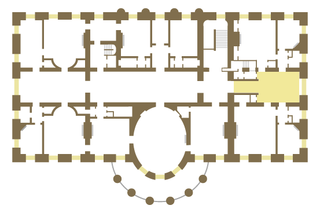
The East Sitting Hall is located on the second floor of the White House, home of the president of the United States. First used as a reception room for guests of the president, it is now a family parlor with access to the east rooms on the second floor.
The presidency of Ronald Reagan began on January 20, 1981, when Ronald Reagan was inaugurated as the 40th president of the United States, and ended on January 20, 1989.

The following is a timeline of the presidency of Jimmy Carter, from January 1, 1980, to January 20, 1981.
The following is a timeline of the presidency of Ronald Reagan from his inauguration as the 40th president of the United States on January 20, 1981, to December 31, 1981.
The following is a timeline of the presidency of George H. W. Bush, from January 1, 1991 to December 31, 1991.
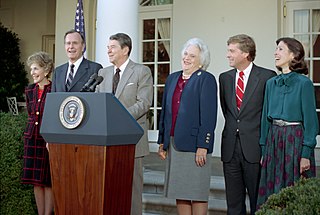
The presidential transition of George H. W. Bush began when then-Vice President Bush won the United States 1988 United States presidential election, becoming the president-elect, and ended when Bush was inaugurated at noon EST on January 20, 1989.























